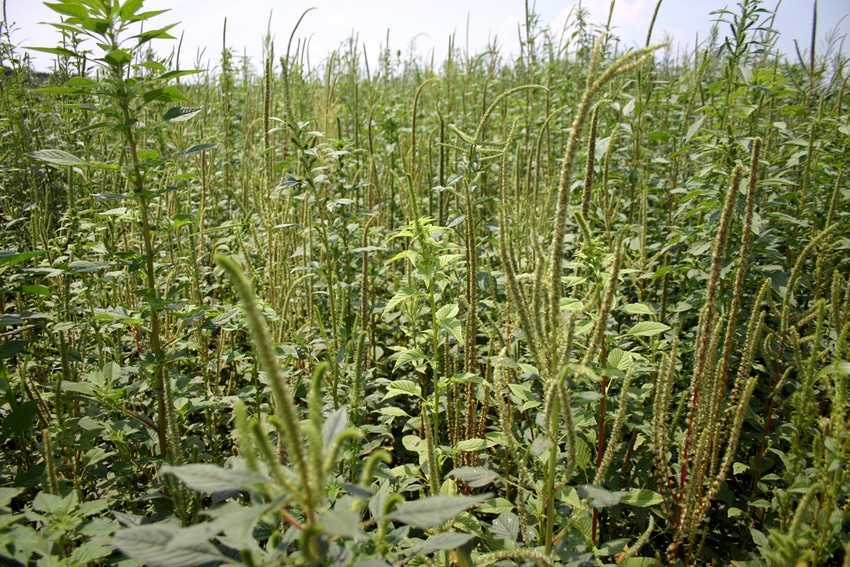April 5, 2011

Much to the chagrin of the catfish and barbeque caterers, winter meetings are over, and it is time to stop talking about farming and get on with the program.
As I was watching a recent television commercial where a guy crawls from under a rock to first learn he can save money by switching insurance companies, I thought an appropriate line as he emerged from under the rock could have been: “What is pigweed and how do I control it?”
Hopefully, everyone has made decisions about what crops to plant and have a weed management plan for each field. No doubt, weed control costs have increased over the past few years as glyphosate-resistant weeds have become more problematic, although these increases have likely been factored into budgets along with increased fuel and fertilizer costs.
As everything seems to become more expensive, it is normal and prudent to look for ways to cut costs or save money where possible. One temptation is to re-think the commitment we made this winter to use preplant or pre-emergence herbicides on cotton, soybean, and rice.
It is impossible for me to remember the number of grown up messes I have walked in with disappointed farmers and attempted to answer the question, “Where did all these weeds come from?” Almost every discussion starts with something like, “I won’t say there were absolutely no weeds in this field last year, but I was pretty clean. We had no problem with harvest before, but if I don’t do something with this mess, I will not be able to run a picker or combine.”
Many of you have heard me say that the most dangerous words we can speak about pigweed control is, “I think I can get by one more year.”
Hoping they won’t be too bad and you can control them postemergence is like attempting to play high card with a card shark and marked deck.
One farmer likened it to “aggie roulette.” When I asked about aggie roulette, he said you put in five bullets and leave only one spot in the cylinder open. Either way, the odds are extremely stacked against effective postemergence control of pigweed in either cotton or soybean regardless of technology used.
Just a quick reminder: In cotton, Reflex preplant or Cotoran or Direx pre-emergence followed by Dual Magnum over the top at two-leaf and five-leaf should get everything off to a good start. Careful scouting for weeds (remember, we are scouting for weeds, not just insects) with hoods or post-direct rigs ready in case they are needed prior to layby and then a good layby program with another residual such as Valor or Direx is as good as we can do.
In soybean, a pre-emergence herbicide followed by glyphosate plus Flexstar when escapes are 2 inches tall in Roundup Ready beans or a pre-emergence herbicide followed by Ignite plus Dual Magnum are the best options we have.
We have evaluated the pre-emergence herbicides, and most do a good job if included in a program where a second residual herbicide such as Flexstar or Dual Magnum is used. Prefix, which is a combination of Dual Magnum and Reflex has been a reliable pre-emergence herbicide and works well in LibertyLink soybean, but we have been reluctant to recommend it in Roundup Ready soybeans.
We know we are likely to need an application of Flexstar postemergence and if we use Reflex pre-emergence, the Flexstar application will exceed the maximum labeled rate for the year. Other pre-emergence herbicides such as Boundary and Authority MTZ offer adequate control and utilize only one PPO herbicide (Flexstar postemergence) in the program.
Caution: FMC also markets Authority XL herbicide that contains sulfentrazone plus 1.25 ounces of Classic at recommended rates. The 1.25 ounces of Classic may cause rotational issues to rice on many soils.
No doubt, 2011 will be different than previous years. All we can do is to be as prepared as possible and try to farm with what Mother Nature issues. The less we leave to chance up front, the better our odds at overcoming the extremes such as floods, droughts, and weeks of high wind.
You May Also Like




